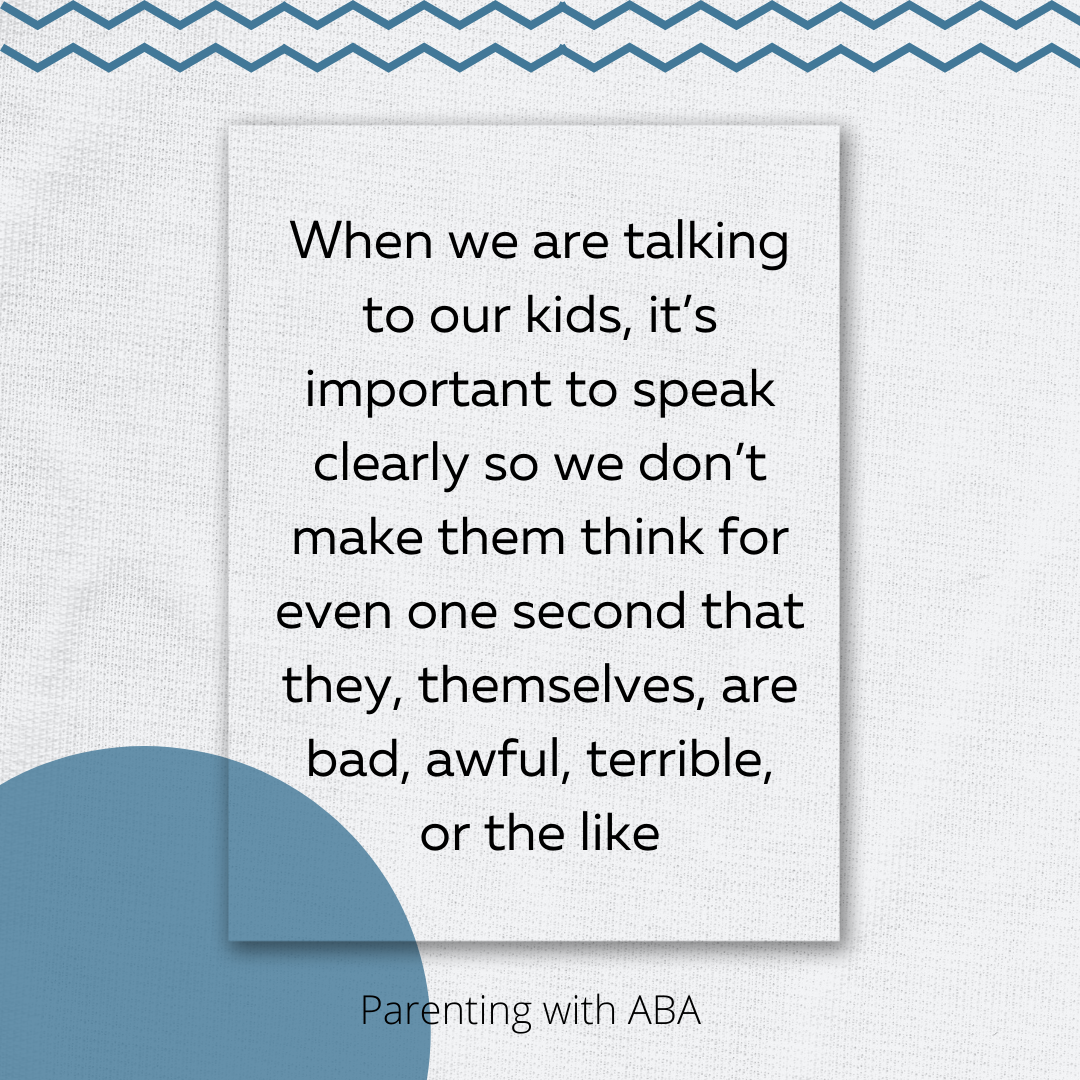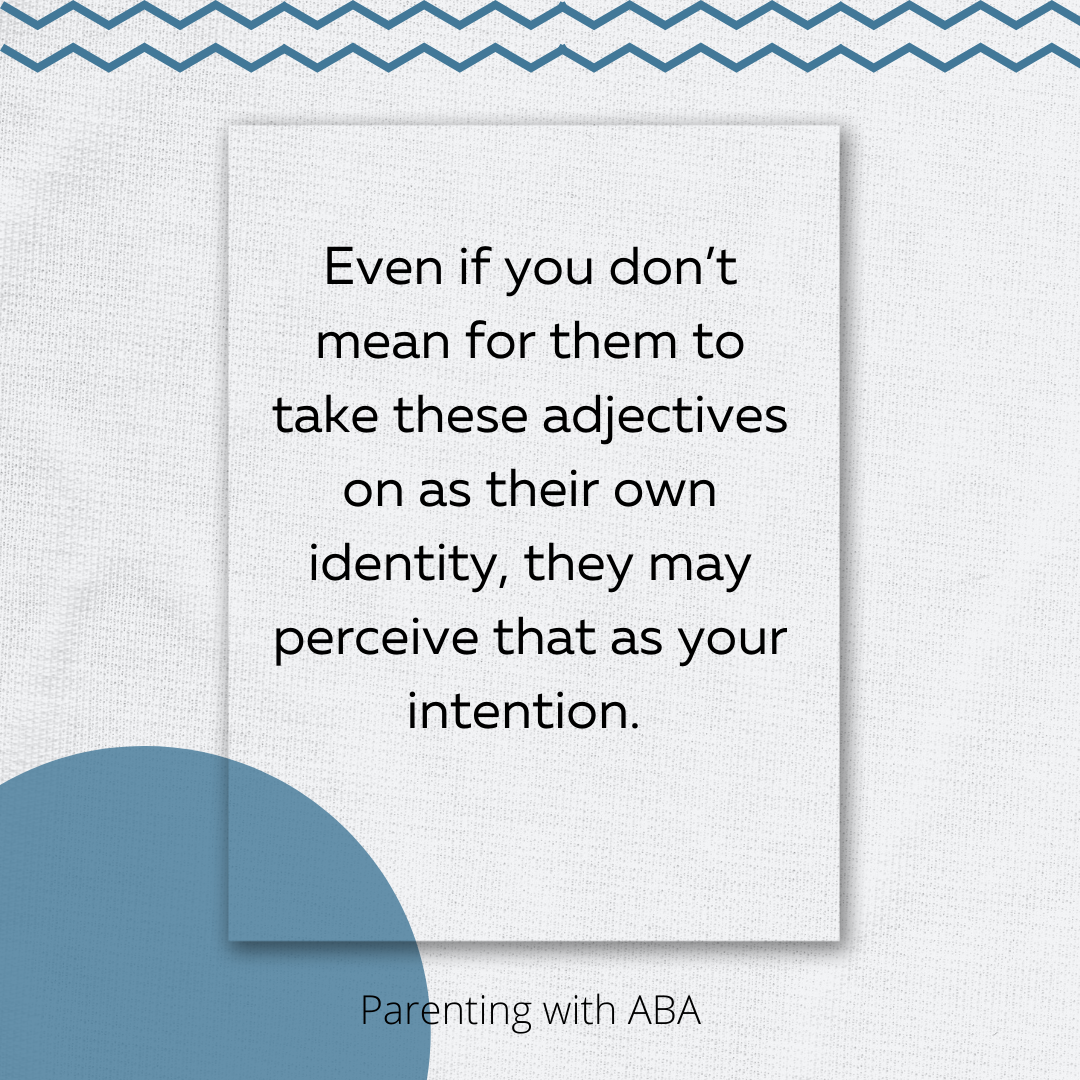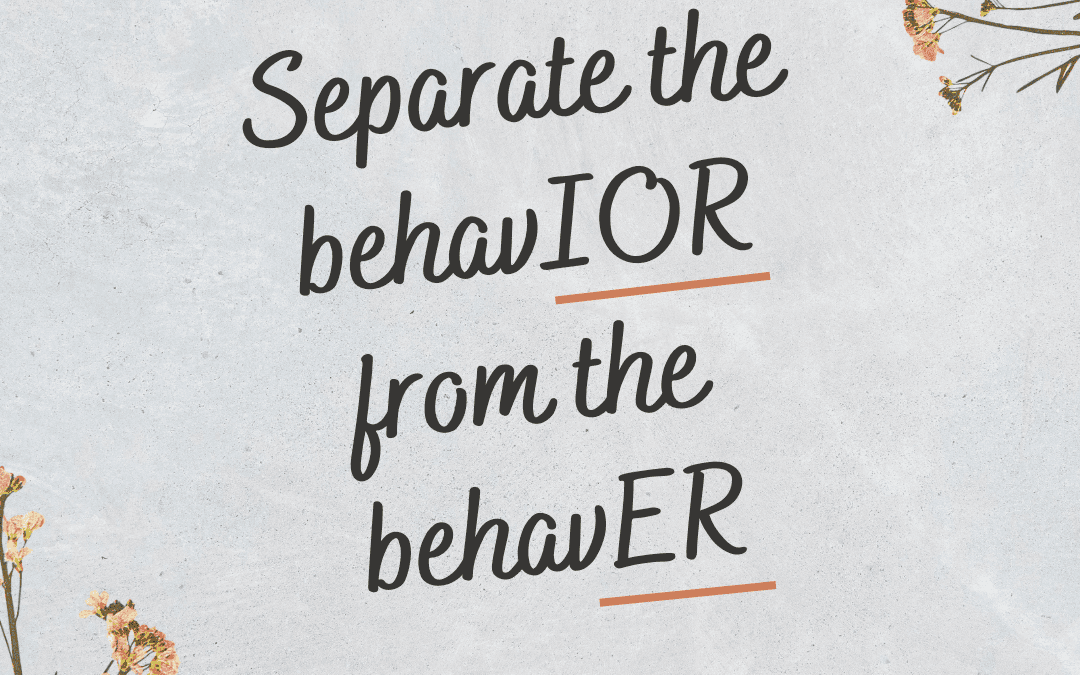When we are talking about behavior and making good choices with our kids- it’s important to make sure we separate the behavIOR from the behavER. Behavior is anything we say, do, or even think. It is separate from your child. They are NOT the things the say, do, or think. They are a person. Your child is a wonderful, precious human. When we separate the behavior from the behaver, we are preventing the blame and shame game from becoming a part of our family life.
When we are talking about actions or behaviors, it’s okay to use whatever descriptors we want. That choice was bad. Hitting someone is awful. Running away from mom in a crowded store is terrible.
But would you use those same descriptors to describe your child? NO! You’d better not. A child is not bad, awful, or terrible.
When we are talking to our kids, it’s important to speak clearly so we don’t make them think for even one second that they, themselves, are bad, awful, terrible, or the like. What you are saying and what they are hearing are not always a 100% match. So be careful with your wording and be clear that your child is a wonderful human, even when they make bad choices.


Make your intentions very clear so your child cannot confuse what you are saying.
“That choice was bad. You are not bad. You are a wonderful kid who made a bad choice. We can learn from it and do better next time.”
“Your behavior was unkind. What you did was unkind. The good news is that you are actually a kind person. So now you can fix your behavior and show that kindness next time. How are you going to do that?”
“You did _(specific behavior)____. That was not okay. You are still a great person and I love you so much. But I don’t love the action __(specific behavior)__. What can you do next time to show off what a great person you are?”
As parents, we need to teach our children to make better choices- it’s our job. But we can do that in a way that doesn’t even accidentally shame our kids. The goal here is to separate the behavior from the behaver. Separate the action from the person. Talk about the action. Talk about the behavior. Be specific and be clear. But make sure your child understand that their identity is not wrapped up in that one bad choice. Remind your child how you feel about them as a person, even when you are upset about the choices they made. Focus on what to do next time, not on shaming your child for making that bad choice this time.
Separate the behavIOR from the behavER. How do we actually do that? Sometimes (okay most of the time) when our child makes those bad choices our reaction is not to remain cool, calm, & collected. Emotions run high when our kids do actions or behaviors that can be labeled as bad, awful, terrible, etc. We are upset! We are worried, angry, frustrated, confused- all kinds of things! So this is not the moment we can calmly tell our child that they are still a wonderful person.
When your emotions are running high, hit the pause button. Pause. Say it out loud to your child, “I’m super upset about _(specific behavior)__. I need to pause and calm down.” Take some deep breaths, get some fresh air, do some jumping jacks or run in place- whatever helps you regulate your own body and emotions. Then you can use these nice sentences describing choices as bad but children as wonderful.
Separate the behavIOR from the behavER when you are debriefing after the fact. Talk about things later on when everyone is calmer and can be more rational. Talking about what to do next time is always a good idea. Just be mindful to avoid placing blame or shaming your child be remembering to separate the behavIOR from the behavER.

Recent Comments